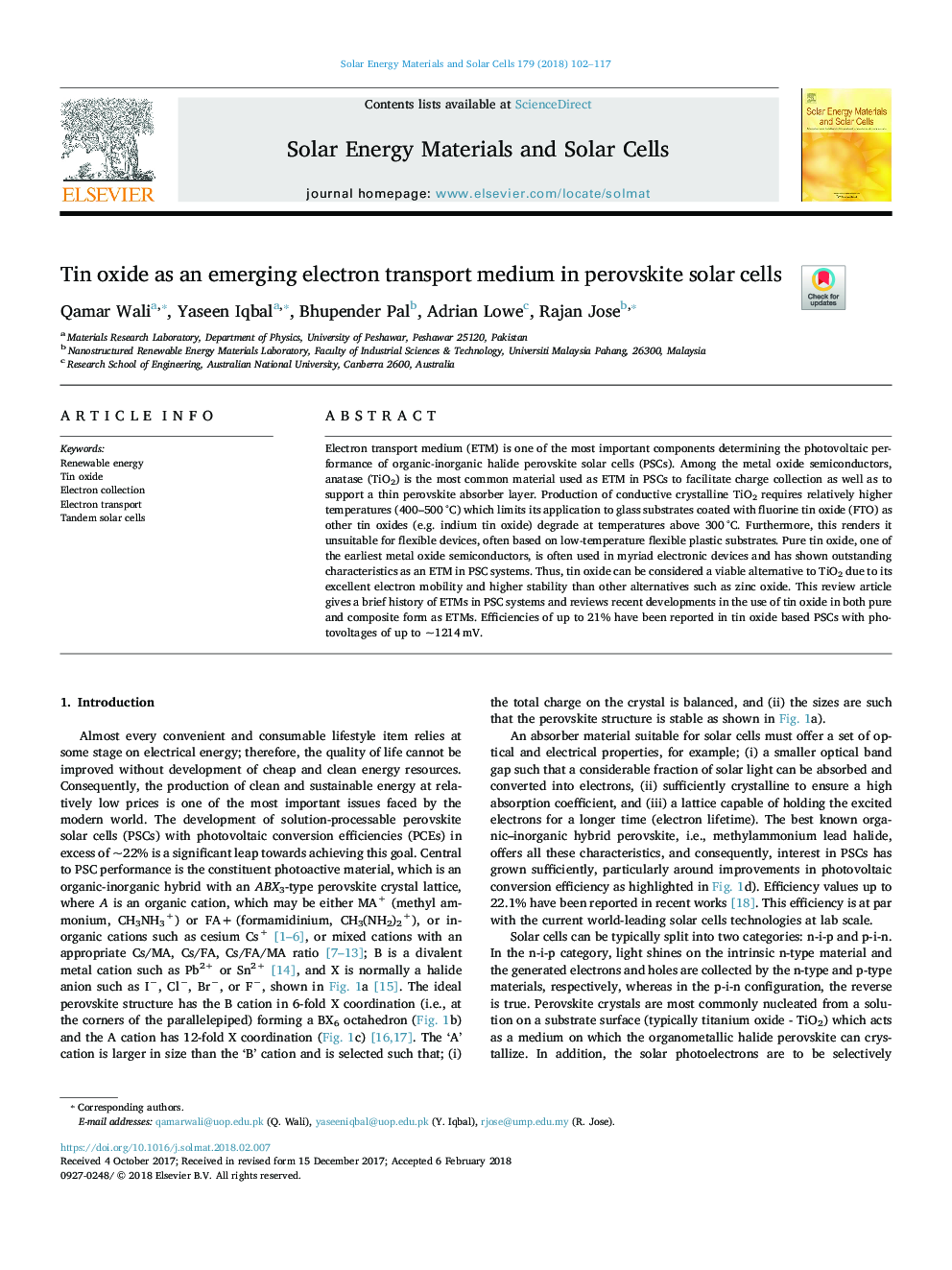| Article ID | Journal | Published Year | Pages | File Type |
|---|---|---|---|---|
| 6534271 | Solar Energy Materials and Solar Cells | 2018 | 16 Pages |
Abstract
Electron transport medium (ETM) is one of the most important components determining the photovoltaic performance of organic-inorganic halide perovskite solar cells (PSCs). Among the metal oxide semiconductors, anatase (TiO2) is the most common material used as ETM in PSCs to facilitate charge collection as well as to support a thin perovskite absorber layer. Production of conductive crystalline TiO2 requires relatively higher temperatures (400-500â¯Â°C) which limits its application to glass substrates coated with fluorine tin oxide (FTO) as other tin oxides (e.g. indium tin oxide) degrade at temperatures above 300â¯Â°C. Furthermore, this renders it unsuitable for flexible devices, often based on low-temperature flexible plastic substrates. Pure tin oxide, one of the earliest metal oxide semiconductors, is often used in myriad electronic devices and has shown outstanding characteristics as an ETM in PSC systems. Thus, tin oxide can be considered a viable alternative to TiO2 due to its excellent electron mobility and higher stability than other alternatives such as zinc oxide. This review article gives a brief history of ETMs in PSC systems and reviews recent developments in the use of tin oxide in both pure and composite form as ETMs. Efficiencies of up to 21% have been reported in tin oxide based PSCs with photovoltages of up to ~1214â¯mV.
Related Topics
Physical Sciences and Engineering
Chemical Engineering
Catalysis
Authors
Qamar Wali, Yaseen Iqbal, Bhupender Pal, Adrian Lowe, Rajan Jose,
